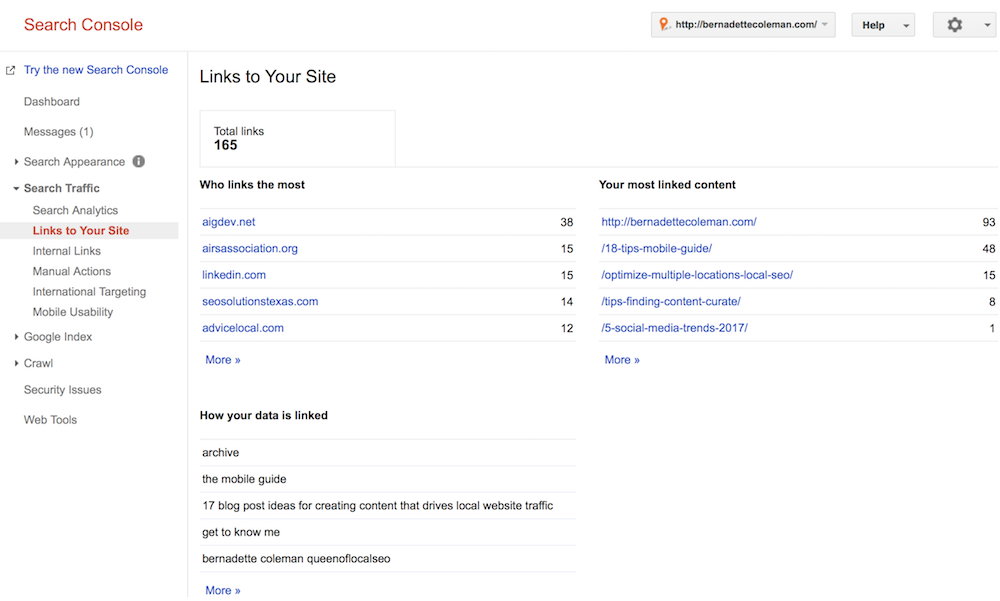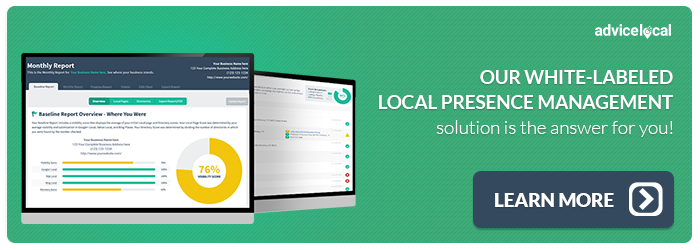Last time I was here, I shared about the basics of an SEO strategy for a new business’ website. We first explored how an effective SEO strategy starts with keyword research, then moves into building keyword-focused products and services pages. Next, we discussed creating blog content to further solidify the website as a trusted source for search engines to serve to consumers in search results.
The Next Steps for a Business’ SEO Strategy
As I am sure you are aware, an SEO strategy, just like any strategy, needs a solid foundation. Creating the kinds of keyword-rich content that search engines and consumers are seeking out are the initial components to the foundation. The business also needs to carefully consider the following three steps.
1. Create a Web of Links
Links are how search engine crawlers will move from page to page within a website. When they land on a business’ website, they’ll look for relevant links to move onto the next page. The links to other pages and posts will also be what encourages site visitors to keep moving throughout the website.
CTR is important for a website, as this sends a signal to search engines that the site visitor came from search results, found the information they were looking for on the website valuable, and continued to another page on the site for more information or to make a purchase. If the site visitor leaves immediately, this sends a different message to search engines, while also creating a high bounce rate. While Google says bounce rates are not a ranking factor, there is no reason to leave it to chance. Instead, each post and page should take site visitors on a journey throughout the website.
To push both site visitors and crawlers to comb through the business website, they need to include both internal links and outbound (external) links. Internal links will drive readers to another page within the site, while outbound links will push them to relevant content on third party sites. Connecting with other high-quality websites can help improve the authority and boost SEO.
The business will also want to consider who is linking to them. A business’ backlink profile is extremely important. Links to a website from another site, inbound links (also known as backlinks), are an incredibly important part of any SEO strategy. Here’s a resource about off-page SEO you may want to read.

Based on the example above, you can see through Google Search Console that this website has 165 links linking to it. If this website’s goal was to sell products and services, this is not a lot of links.
Google Search Console will allow the business to dig in deeper to identify every page and post being linked to from a third-party site.
Backlinks act as a vote of approval for the business’ website. When a high-quality page links to a website page, it will not only push visitors to the page, but it will also demonstrate to search engines that other websites find the content valuable. The more backlinks the business has from high-quality sources, the easier it will be to get content to the top of SERPs.
Directory listings, map listings, Google Business Profile (formerly Google My Business) and social media are a few ways businesses can easily build backlinks. Remember, quality over quantity is important when building citations. Here’s more information for you on this topic.
To secure backlinks naturally, the business will need to focus on the quality of the content they’re creating. When they create something genuinely valuable, it will be easier for sites to link to the content naturally. Websites can boost backlinks by looking for broken links on third party sites, reaching out to site owners, and providing new links to potentially replace their broken ones. Link building is an important component of an SEO strategy.
2. Measure and Track Successes
After the business has found their keywords, publishes news pages and blog posts, and created their backlink strategy, they need to ensure what they’re doing is bringing the desired results.
Google Analytics and Google Search Console is really important here. Not only will the business be able to see who is coming to the website, but they can also see where the site visitors are coming from, how long they stay, and if the content is relevant and useful. If most of the site visitors are coming from an organic search, the business will know their SEO strategy is helping.

As shown in the example above from Google Analytics, this business can tell that out of the 615 users that have visited the homepage specifically (during the report timeframe), 68.48% of them left without visiting another page. This means the homepage needs optimized to encourage more click-throughs. It seems these site visitors are reading the homepage, since time on the site averages 3 minutes and 12 seconds, but they’re not moving deeper into the website.
The business needs to look beyond just who is coming to the website. If site visitors aren’t converting, the business may not be targeting the right audience or developing the right content to close the deal. While appearing in search results is important, if they’re not the right search results, it won’t help build the brand or get the business new customers.
SEO strategies can take some time to start showing results. When tracking and measuring, it’s important to keep this in mind. If changes to the SEO strategy are made too soon, the business may never get the results they’re seeking.
Each time there is a change in rank, website traffic, or activity, be sure to look back at what created the boost or dip in traffic. For example, a piece of content going viral or an influencer sharing a specific article link can cause spikes in a business’ website traffic. Knowing why these changes are happening will help refine the SEO strategy for the future.
3. Revise and Refine
Search engines are always changing their algorithms. Because of this, an SEO strategy isn’t something a business can create one time and let it alone. To continue to see results, they need to be aware of each algorithmic change and shift the strategy accordingly.
Many algorithm changes focus on creating a robust experience for the user. The changes help ensure that each user gets the most relevant, valuable information possible. If the business focuses on creating high-quality, useful content from the start, it will be easier to stay up-to-date and in the top of search results.
Reevaluating the SEO strategy periodically to ensure the keywords targeted are still relevant will be necessary. While they may fit with the products or services the business is offering, they may find the keywords have become too diluted or less frequently searched for. Keywords aren’t key if no one is searching for them.
Additionally, continuing to shift a keyword strategy can also help to expand the keywords the business may appear for. Plus, when constantly doing research to find new keywords to target, the business can more easily ensure the website stays relevant.
SEO Works if the Strategy is Right and the Business Puts in the Work
SEO is an important and powerful tool to help local businesses and brands beat out the competition in search, but it requires putting in the work! SEO is not a quick, one-time effort.
Search engine optimization is an ever-evolving strategy that requires time, attention and detail. This is where the pros at Advice Local come in. Our team of local search experts are here to do the dirty work and let you and your clients reap the rewards. Request a demo to learn about our partner solutions today!
Access my DIY SEO Audit 5-part series to complete an SEO audit on an existing website.




